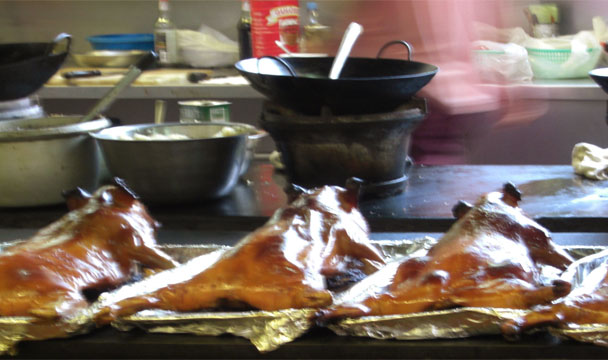Empires are funny things. They spread like wildfire, engulfing entire societies. Then just as quickly, they smolder out, leaving lasting scars and burns. Some of those scars are points of pride, like tattoos, while others are points of confusion.
A few weeks ago I traveled to the small island country of Macau, a place scarred deeply by both the Chinese and Portuguese Empires. Road signs are in Cantonese and Portuguese. Chinese bakeries turn out almond pastries. The cobblestone streets are so reminiscent of Europe that once I almost caught myself thanking my dinner host with an “obrigado.”
Fernando’s Restaurant is one of those tattoo-style scars. It’s something to be proud of. We ordered salt-cod salad and roast suckling pig in Chinese. The Portuguese Rolls were perfect. But down at the bottom of the menu was one of those confusing-style scars: feijoada, the national dish of Brazil, another (and very different) former Portuguese colony. We ordered it anyway.
The feijoada was all wrong. The original is a heavy black bean stew. It is served with slices of orange, collard greens, and toasted manioc flour. The version at Fernando’s was made with kidney beans and was served with nothing. We ate it anyway—because although it was wrong, it was good. Fernando’s feijoada is not Brazilian. It is not Portuguese; it is not even Chinese. It is all of those things. It is Macau, and it is true and honest fusion cuisine.
Of course, feijoada—even in its original Brazilian form—is fusion. It is the love-child meal of African slaves and Portuguese colonists. In Macau’s version the pork bits come with lots of flabby skin—très Chinese—and I highly suspect there to be some soy sauce in the mix. And although that does not feijoada make, it does make perfect sense.
If you’re not planning a trip to Macau anytime soon but still want to try the cuisine, there are very few places in the States to find it—but one is L.A.’s Macau Street. And some folks in New York may also be opening a Macanese restaurant in the not-too-distant future.


